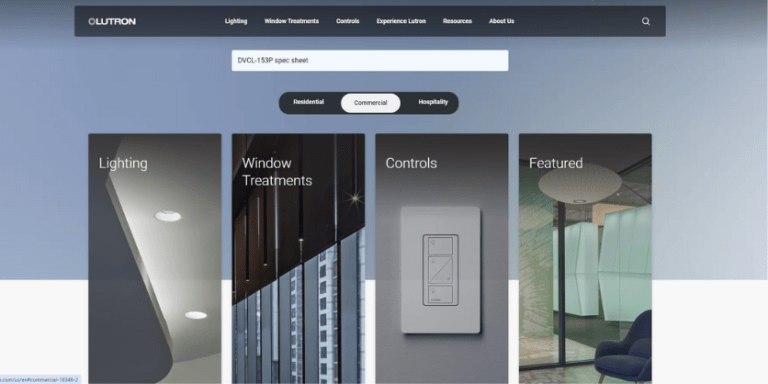Ceiling Fan Manufacturer Advocates for Temporary Tax Credit to Ease Tariff Burden, Rallies Industry to Support Initiative

This week, Nathan Frampton, CEO of Fanimation, released a public memo to the lighting and ceiling fan community, calling for industry support on a proposal for a temporary tax credit to counteract the recently imposed tariffs on China.
Frampton’s interest is rooted in the fact that nearly all residential ceiling fans sold in the U.S. are manufactured in China due to the country’s scale and infrastructure advantages. “While there is some limited production in Vietnam, Cambodia, Malaysia, and Taiwan, I estimate this accounts for less than 5% of the U.S. market,” he said.
In effort to reduce the negative effects on price that the reciprocal tariff on Chinese goods would have on ceiling fan retailers and their customers, Frampton – who has a background in accounting – has researched alternatives that might be viable.
In his memo to the industry, he stated, “As a long-time participant in the American manufacturing sector, I believe it is time for our industry to take a proactive and unified stance on the issue of supply chain dependence on China. While we recognize the strategic imperative of decoupling, the path forward must be both realistic and economically viable. I propose that we advocate for federal legislation that provides a temporary tax credit equal to the tariffs paid on imports from China. This credit would serve as a transitional tool, enabling companies to reinvest those funds into reshoring, nearshoring, or developing alternative sourcing strategies without immediate financial disruption.”
According to Frampton, this proposal reflects the broader policy direction embraced by both Congress and the American public. “Our industry must acknowledge this shift and prepare accordingly. By aligning ourselves with this national objective – while also advocating for a practical, time-bound support mechanism – we can protect jobs, stabilize pricing, and position our companies for long-term competitiveness. I welcome feedback and collaboration from industry partners and stakeholders who share this vision and are interested in advancing a thoughtful, actionable plan.”
I asked Frampton if he could detail his plan for our readership, and he agreed.
LL: What is the biggest obstacle to manufacturing ceiling fans in the U.S.?
NF: The biggest obstacle is the lack of a fully developed supply chain and a skilled labor force. Ceiling fans are complex, multi-component products requiring motors, blades, stamped and die-cast parts, electronics, and specialized packaging. Those supplier networks no longer exist in the U.S. at scale. Even with automation, rebuilding the infrastructure would take massive capital investment — and even then, we don’t have enough labor. We’re not just missing engineers or specialists, we’d need a very large pool of unskilled labor, which doesn’t currently exist.
Unlike categories like textiles that can rely on domestic raw materials, ceiling fans require a range of imported inputs and precision manufacturing. They also occupy a price-sensitive space, where margins can’t easily absorb significant cost increases. That’s what makes domestic production difficult for our category.
LL: Has the strategy you are proposing been successful in other industries before?
NF: To be honest, I’m not sure if this exact tax credit structure – where companies get credit for the actual tariffs they pay – has been done before, but the underlying concept isn’t new. We’ve seen targeted tax credits used effectively in other sectors to support strategic shifts — like the clean energy space with Section 48C. My proposal applies that same principle to our current trade environment.
What makes this different is the simplicity: companies are already paying these tariffs. Instead of letting that money disappear into the federal budget, we’re saying give businesses the ability to redirect it toward building new supply chain solutions. It’s a practical, market-driven approach that supports national trade goals without asking for new federal spending. Of course, the easy thing would be to simply suspend the tariffs for a period of time to give us room to transition. While cashflow may be impacted, my proposal gives us a path forward without having to fight the broader momentum toward decoupling.
LL: What would it take for ceiling fan manufacturing to return to the U.S.?
NF: Bringing ceiling fan manufacturing back would take a lot of time and a lot of investment. We’d need to rebuild tooling, reestablish domestic supply chains, and develop a workforce capable with the necessary skill sets. It’s important that everyone understands that none of these things exist at scale domestically. Even with automation, we are simply not there yet. Trying to do so quickly would push costs far beyond what most consumers would be willing to pay.
That’s why this proposal isn’t solely focused on reshoring. It’s about giving companies the flexibility to decouple from China in a way that makes sense for them. One option is shifting sourcing to Southeast Asian partners like Vietnam, Cambodia, Malaysia, and Taiwan. Those regions are more aligned with U.S. interests, and we expect better trade terms moving forward. The tax credit gives companies time and space to make smart, long-term sourcing decisions.
LL: In your memo, you mention, “this proposal reflects the broader policy direction embraced by both Congress and the American public.” Can you explain this further?
NF: The direction was made clear during President Trump’s first term, when his administration implemented broad tariffs and aggressively pushed to reduce U.S. reliance on China. That policy – decouple or negotiate stronger terms – was a defining feature of his trade agenda. He made it clear he intended to pursue that even more forcefully if re-elected. Voters knew that. By supporting him once – and again – they’ve effectively endorsed that direction.
This proposal is consistent with that policy. It doesn’t fight the momentum; it provides a responsible, business-friendly path to move in the same direction. It allows manufacturers to transition out of China without chaos — and without having to absorb the full cost of doing it overnight.
LL: What part can the American Lighting Association (ALA) play in making this proposal a reality?
NF: Congress listens closely to national associations, especially when they represent a united industry voice. That said, I believe we need an all-of-the-above strategy. That means ALA playing a leading role, while individual companies also speak out and aligned coalitions push similar solutions.
My expectation is that ALA will support a plan like this and ultimately join forces with other industries facing the same challenge. When we combine the strength of a national association with direct company voices and broader coalitions, we have a much better chance of shaping meaningful policy.
LL: How can industry members follow your advice to “align ourselves with this national objective” in order to “protect jobs, stabilize pricing, and position our companies for long-term competitiveness?”
NF: It starts by recognizing that the shift away from China is already happening. Aligning with that direction is not only patriotic — it’s smart business. Industry members can help by supporting pragmatic solutions that allow for a smooth transition, like the tax credit I’m proposing.
That means contacting the American Lighting Association to voice support for a plan like this [even if you are not a member of the association]. The stronger the response, the stronger ALA’s voice will be in Washington. And beyond that, I encourage companies to contact their senators, representatives, and the White House directly. These messages don’t have to be complicated — but they should be direct. Lawmakers need to hear from business leaders who are navigating this transition and offering workable solutions. Each of our voices can make an impact!
LL: What are the next steps that industry members need to do?
NF: Build visible support and momentum. Start by emailing ALA leadership to express your support for this type of solution. Then take the time to reach out to your federal elected officials — congressional contacts are easy to find online. The more voices they hear on this issue, the more weight it carries.
Meanwhile, I’ll continue coordinating with ALA and other stakeholders to refine the proposal and build alignment with broader business coalitions. If anyone is interested in contributing to that effort, I’d welcome the collaboration. The sooner we move, the better positioned we’ll be to influence what happens next.
Related articles
How Much Will Tariffs Disrupt Distributors’ Buying Cycle?
Steel & Aluminum Tariffs Could Throw a Wrench in Lighting Showrooms’ Growth








